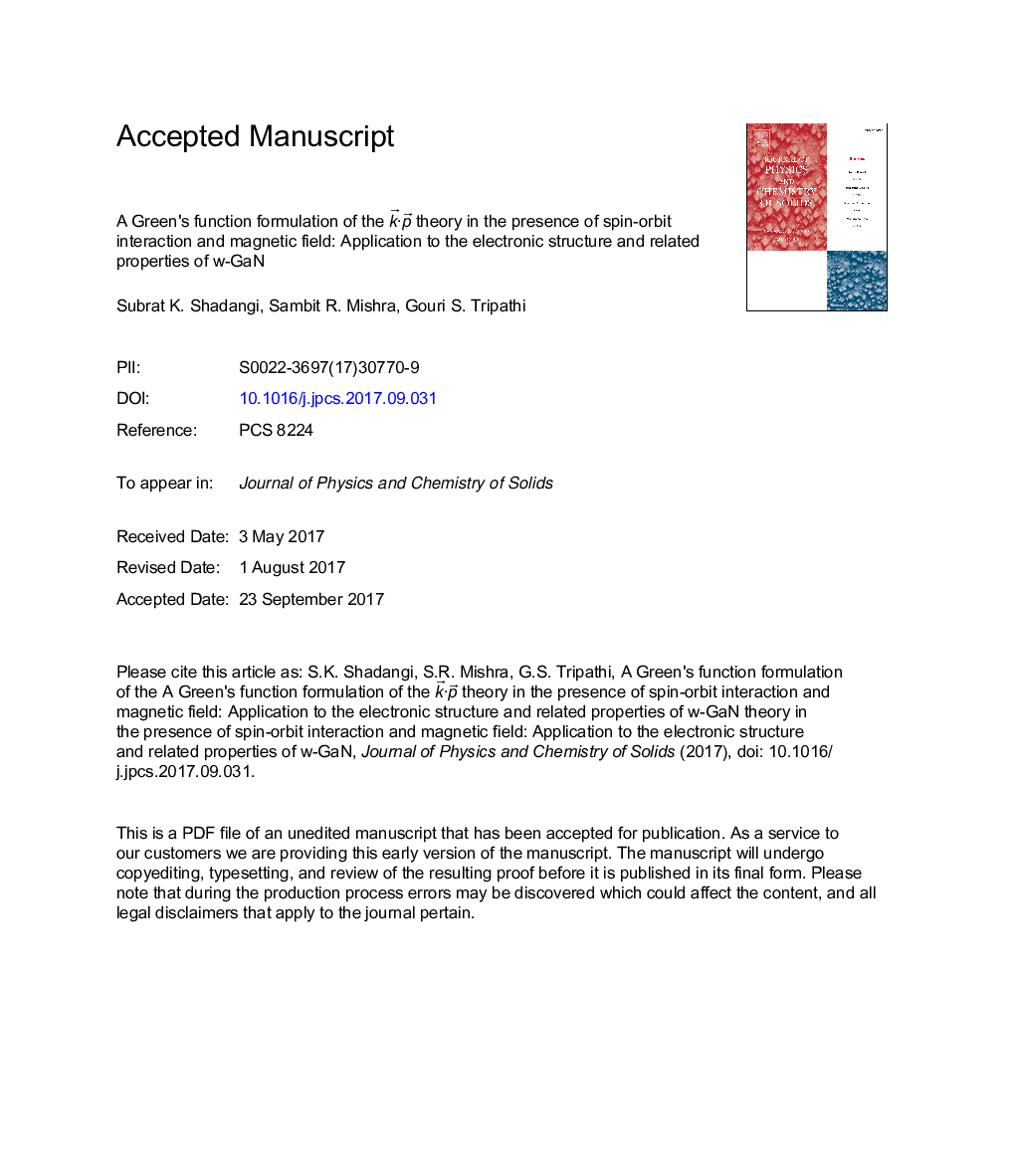| Article ID | Journal | Published Year | Pages | File Type |
|---|---|---|---|---|
| 5447291 | Journal of Physics and Chemistry of Solids | 2018 | 17 Pages |
Abstract
We use a Green's function perturbation formalism in the presence of an applied magnetic field and spin-orbit effects in the effective mass representation (EMR). The lack of lattice translational symmetry of the vector potential in the presence of the magnetic field is considered by redefining the Green's function in terms of the Peierls' phase factor. The equation of motion of the Green's function as a function of a magnetic wave vector was solved using perturbation theory, leading to expressions for the effective mass and the g-factor. We study the electronic structure of wurtzite GaN theoretically using the resulting kâ·Ïâ method, where kâ is the electronic wave vector and Ïâ is the relativistic momentum operator by considering the conduction band edge and three valence bands. The kâ·Ïâ Hamiltonians for the conduction band edge and the valence bands are diagonalized, considering the conduction band and one valence band at a time. We obtain electron and hole dispersions. Effects of other bands are considered by using perturbation theory. Resulting dispersions agree with the results of other calculations. In order to study the effective mass and the g-factor, we use the eigenvalues and eigenfunctions obtained after the diagonalization. Our results for the effective masses and the g-factors agree fairly well with available theoretical and experimental results, Temperature dependence of both the electronic effective mass and g-factor is studied and trends obtained agree with the existing experimental data.
Keywords
Related Topics
Physical Sciences and Engineering
Materials Science
Electronic, Optical and Magnetic Materials
Authors
Subrat K. Shadangi, Sambit R. Mishra, Gouri S. Tripathi,
